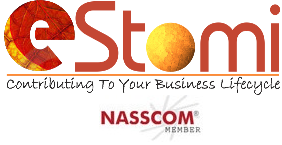A new phenomenon that is emerging in the ITSM sector today is called Social IT Management and in the consumer world it is commonly known as “multichannel” and is all about delivering engagement and sales, customer service and support in a way that fits in with the individual customer’s personal life.
Communication channels – once few, now many – are converging into a “macro system” of IT support to service Business Users across an array of channels, touch points and devices. Multiple channels are allowing the consumer to have a choice of in-store service, call centers, websites, mobile, email and web chat touch points. They want to pick the channel that works best for them at any point in time.
The use of Twitter, online branded forums, web chat, phone, self-service portals and mobile apps is becoming commonplace but in the world of IT, Social IT Management is about delivering and supporting services in a way that fits in with the Business User’s work life.
Social IT Management is about giving Business Users choice, and supporting them where, when and how they need it. It’s not about pushing them to the lowest cost channel just to suit the IT cost-cutting agenda. Within a Social IT Management environment, traditional support channels such as phone and fax sit alongside newer technologies such as web chat, self-service portals, mobile apps and enterprise social platforms. Social IT Management gives Business Users the choice of when and how they engage with your service desk – what is convenient to them based on where they are and what they are doing .Longtime service desk players such as ServiceNow, BMC Remedy etc are leveraging not just social interfaces but the entire concept of social to let people interact with IT and, in some cases, the rest of the organization. The idea is to apply ideas and processes from existing social media tools in your service desk instead of merely using the tool itself. Here are five ways you could apply its dynamics in your own IT service desk.
- Being there for the customers:- Going social IT is all about meeting your customers’ expectations, to be available where they are, whenever they are. Figure out the one place where your users frequently visit then decide on the tool based on the adoption that is already prevalent in the enterprise and give users an easy way to connect with each other.
- People like to help each other- Super-users and communities are key here along with providing the right environment for peer support. Training the users on basic issues is never a bad deal. Once you identify and train your users, give super-users a platform to help others. Incentivizing super-users is a great way to ensure crowdsourcing works.
- Brands update followers- A good brand keeps its followers updated about everything related to the product from downtime to upgrades. The biggest source here is then social media platforms like Facebook and Twitter or even internal social networking forums. One could even look into integrating external tools to service desk if that works better.
- Communicate – A vital reason why social media exploded, users and brands found a way to communicate with each other irrespective of topic, place, or time. We have seen product updates, customer support, and some really angry customers battle it out on social media in the open. It’s quicker to get the attention – whether it calls for an explosive reaction or not is a whole other thing. Everyone gets a voice and connects better through social
- Talk Human – ITSM delivery is all about helping people and that’s why it’s important to maintain human-to-human and face-to-face contact. Once you acknowledge that the users you’re helping are people too, talking human becomes a lot easier. Keeping it simple goes a long way especially in a space like the service desk. The basic assumption should be that your users do not know anything technical – like where the command prompt is.
eStomi, understanding the growing importance of social media, has developed the integration of ITSM with prominent social media platforms like Twitter , Facebook etc. As the R&D team of eStomi continues to develop creative solutions, it has built a platform where users can create incidents in BMC ITSM using one’s twitter account. Through this Requesters and Helpdesk agents can also continue the conversation in tweets which gets added in worklog and this integration then helps to manage the entire Incident Management lifecycle using Twitter.
Similarly eStomi also allows customers to post issues/grievances on Facebook page or account to create Helpdesk tickets. Through this the end requester can continue creating and updating the tickets by merely posting the details to one’s official Facebook Support page or to a support account. The priority can also be changed by the customer without having to log into the Helpdesk/ITSM solution.
To know more about eStomi’s ITSM integration with Social Media platforns one can visit http://www.estomi.in/twitter-integration/ and http://www.estomi.in/facebook-integration/ or simply write to Connect@eStomi.net to get the solution implemented.
